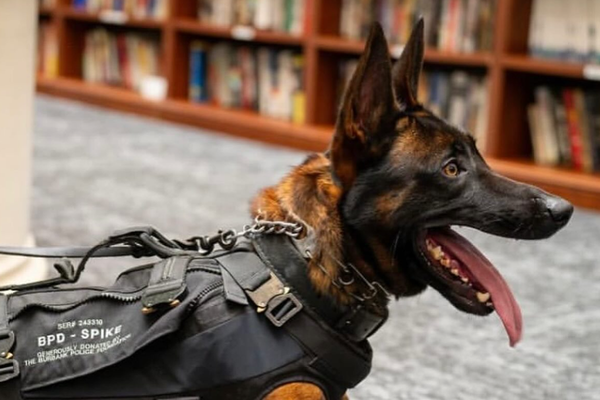
Police officer Zachary Rolfe did not have “reasonable” grounds to shoot Kumanjayi Walker a second and third time, and the second and third shots provided no tactical advantage in the attempted arrest of the Aboriginal man, a former Northern Territory police defensive tactics trainer told Rolfe’s murder trial before the NT supreme court.
The court has previously heard Rolfe shot Walker three times during an attempted arrest on 9 November 2019 in the remote community of Yuendumu, about 300km from Alice Springs.
Rolfe is charged in relation to the second and third shots fired at Walker, a 19-year-old Warlpiri man. He has pleaded not guilty and is defending his actions on the basis they were justified in light of the risk that Walker posed to him and a colleague, then-constable Adam Eberl.
Det Sr Sgt Andrew Barram, who has been an NT police officer for 25 years and completed four reports into the shooting, continued his evidence in the case on Tuesday.
Barram previously had oversight of all firearms and defensive tactics training within NT police and investigated the Yuendumu incident in his role within professional standards command, the force’s internal investigations unit.
He said that Rolfe had been justified in shooting Walker the first time. This shot is not subject to any charges. The court previously heard Walker stabbed Rolfe in the shoulder with a pair of scissors and then started to wrestle with Eberl while standing up, before he was shot the first time by Rolfe.
Eberl has previously given evidence to the court that soon after this point he and Walker fell on to a mattress on the floor of the property and continued struggling.
The prosecution said the pair were in this position, with Eberl’s body on top of Walker, when Rolfe fired the second and third shots, the court has heard. Prosecutors said the second shot was fired about 2.6 seconds after the first shot, and the third 0.5 seconds after the second.
On Tuesday, Barram said these shots were not reasonable, as the situation between Eberl and Walker had changed “substantially” from when the first shot was fired.
“They had gone from a standing position in a fairly equal fight, to being on the ground … and constable Eberl pinning Mr Walker down,” he said.
Barram said he made his assessments about whether the firing of all shots was reasonable only after watching body-worn camera footage of the incident in real time, but that after watching the same footage slowed down it confirmed his assessment.
He said that instead of firing the second and third shots, Rolfe could have used “defensive tactics … that don’t involve a weapon” to assist Eberl in controlling Walker. Barram said Rolfe had learned such tactics as part of his police training.
He said he did not think the firing of the two shots “tactically gave them any advantage”, as Rolfe was only able to help Eberl to handcuff Walker after he had placed his gun back in his holster and had the use of both hands.
Rolfe’s failure to issue verbal commands when Walker presented the scissors or when he drew his weapon also went against his police training, Barram said.
Under cross-examination by David Edwardson QC, for Rolfe, Barram agreed that the body-worn camera footage did not show where Walker’s arm was at the time the second and third shots were fired, and that all such camera footage had limitations.
He also agreed that a situation that dynamic could change in a split second, and a person under a police officer could reverse that position in an instant.
Edwardson asked Barram about one of the reports he prepared which he said made clear he could not comment on how Rolfe perceived the threat posed by Walker at the time of the shooting.
In the report, Barram said: “Rolfe has not provided what his apprehensions and beliefs were at the time of firing the shots, and has exercised his right to silence. Therefore I am unable to consider these mental elements in coming to an opinion about the necessity and proportionality of the force used in this situation.”
Edwardson asked Barram about a video he shared about a month before the Yuendumu incident on his personal Facebook page regarding a police shooting in the US. The post had the heading, “brings a little bit of reality into the argument”, and the video itself contained a graphic that said: “Why officer shoot until threat has stopped.”
Barram agreed with Edwardson that the Facebook video showed a scenario that was entirely different from that which had confronted Rolfe. Barram agreed that the video showed an offender who remained a threat as he was not incapacitated despite police shooting at him on multiple occasions.
Edwardson signalled that he planned to ask Barram further questions about the Facebook post when his cross-examination continued on Wednesday.







